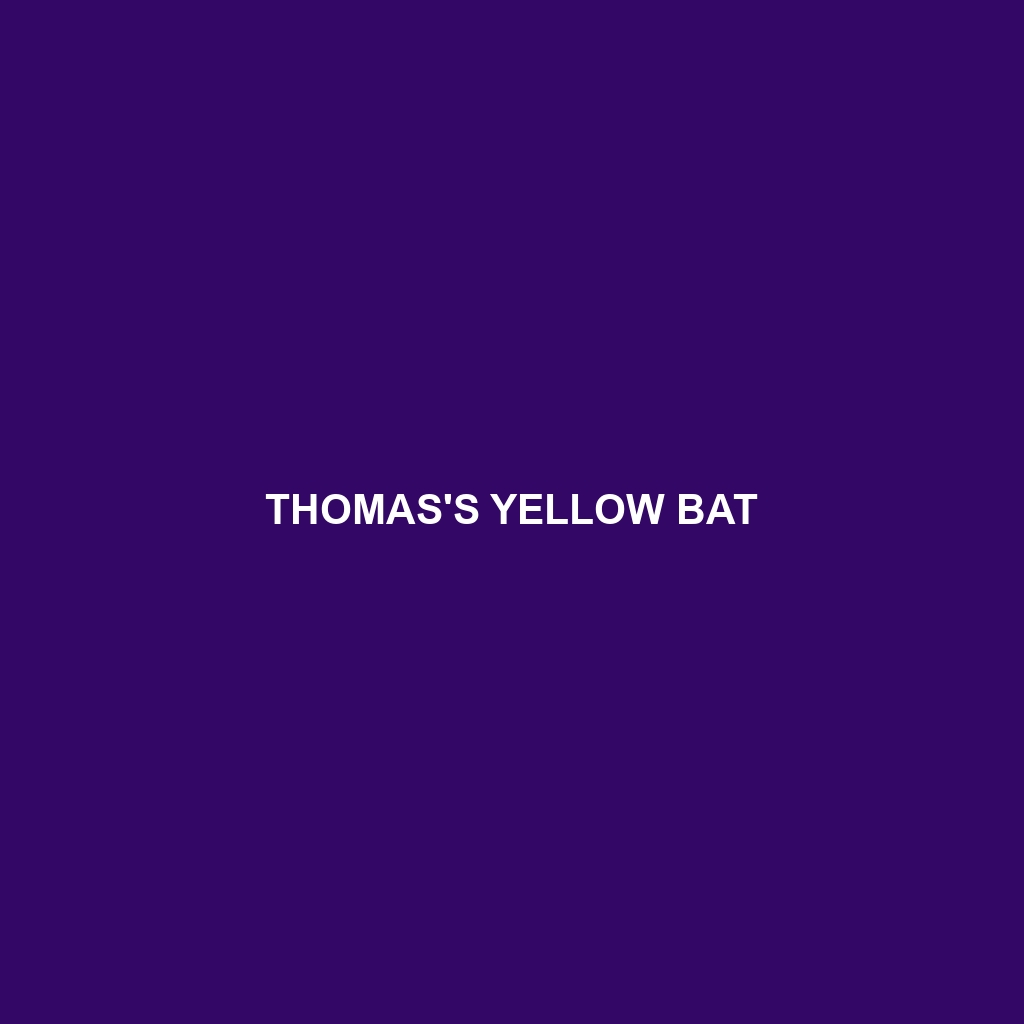Thomas’s Yellow Bat
Common Name: Thomas’s Yellow Bat
Scientific Name: Scotophilus thomasi
Habitat: Thomas’s Yellow Bat is primarily found in dense tropical and subtropical forests across Southeast Asia. This species thrives in areas where high humidity and lush vegetation create excellent roosting opportunities. Notably, it is commonly observed in rainforest regions of countries such as Thailand, Malaysia, and Indonesia, favoring lowland areas and sometimes venturing into elevated regions.
Physical Characteristics: This medium-sized bat exhibits distinctive characteristics, including a wingspan ranging from 29 to 34 centimeters. The fur of Thomas’s Yellow Bat is primarily yellowish to light brown, enabling it to blend seamlessly into its forest environment. Its large, rounded ears and prominent nose are notable, aiding in its echolocation abilities. The bat’s unique coloration and relatively robust body shape make it easily identifiable among other bat species.
Behavior: Thomas’s Yellow Bat is primarily nocturnal, emerging at dusk to forage for insects. Its social behavior is characterized by roosting in small colonies, often found in tree hollows or among dense foliage. The bat employs a sophisticated echolocation system, enabling it to navigate through dense forests while hunting for prey. Additionally, during mating season, males exhibit various vocalizations to attract potential mates, showcasing their health and vigor.
Diet: The diet of Thomas’s Yellow Bat primarily consists of a variety of insects, including moths, beetles, and other nocturnal arthropods. This insectivorous diet not only highlights its role as a natural pest controller but also illustrates its importance as a predator in maintaining ecological balance. The bat employs a hawking foraging strategy, catching prey mid-flight using its agile maneuvers.
Reproduction: Thomas’s Yellow Bat typically breeds during the warmer months, with a peak breeding season observed in late spring to early summer. Females generally give birth to one offspring per breeding cycle, with the young being nursed for several weeks until they are capable of flight. Maternal care is significant, with mothers often seen forming protective clusters around their young.
Conservation Status: The conservation status of Thomas’s Yellow Bat is currently listed as **vulnerable** by the International Union for Conservation of Nature (IUCN). Habitat loss due to deforestation and human encroachment poses significant threats to their populations, making conservation efforts crucial for their survival.
Interesting Facts: One fascinating aspect of Thomas’s Yellow Bat is its ability to adapt to varying ecological conditions within its range. Additionally, this species is known for its remarkable agility in flight, often making sharp turns to evade predators and snatch prey. Their unique coloration is also believed to play a role in their camouflage against forest predators.
Role in Ecosystem: Thomas’s Yellow Bat plays an integral role in its ecosystem as a pollinator and as a predator of insects. By helping to control insect populations, this bat indirectly supports agricultural activities and contributes to the overall health of its habitat. Its interactions with various plant species emphasize its importance in maintaining biodiversity within forest ecosystems.
